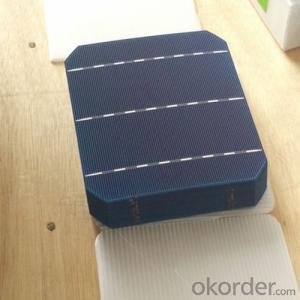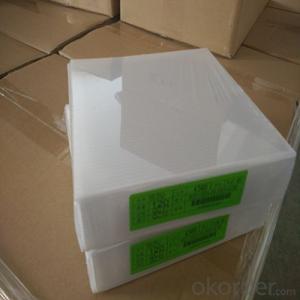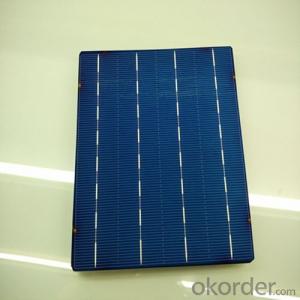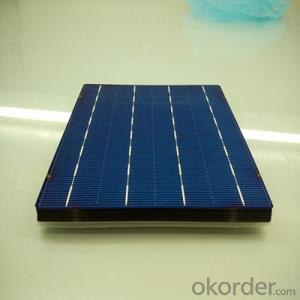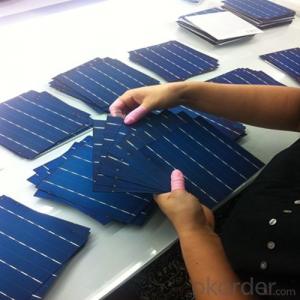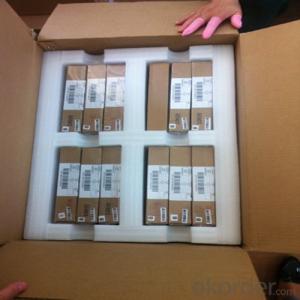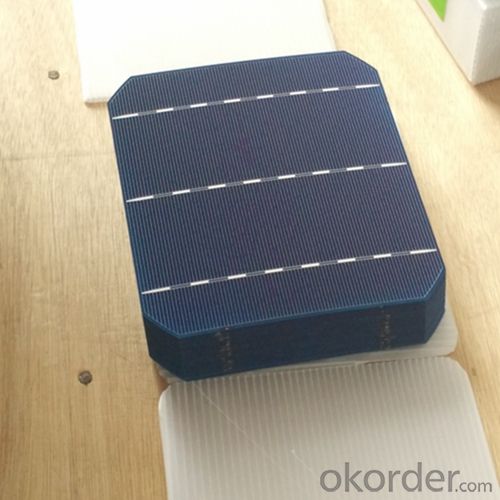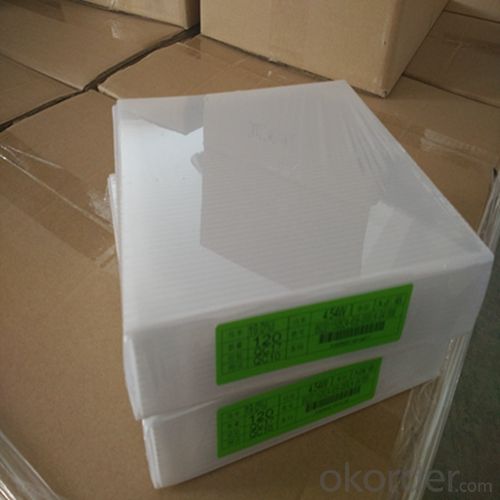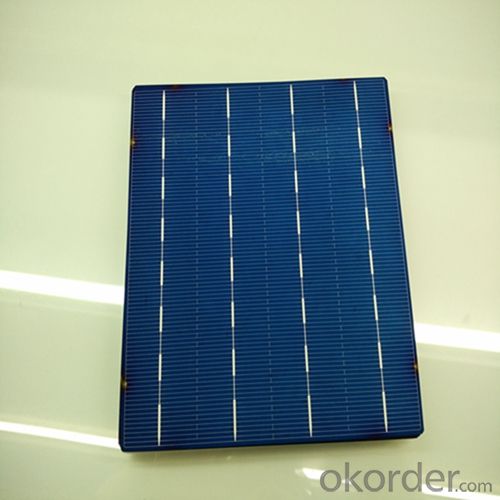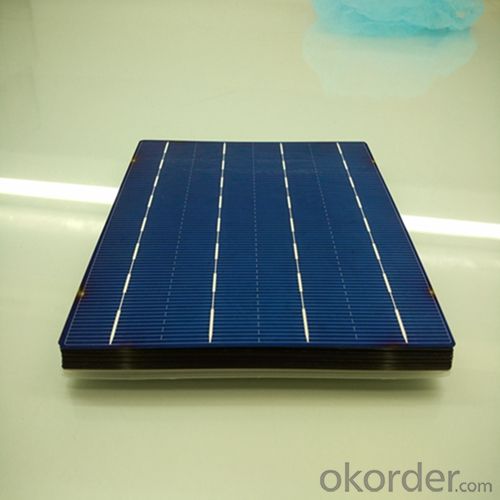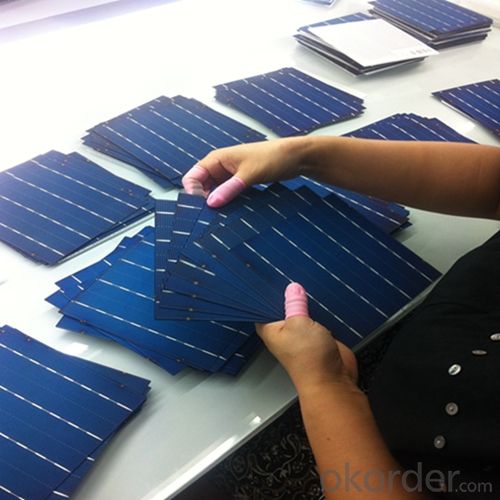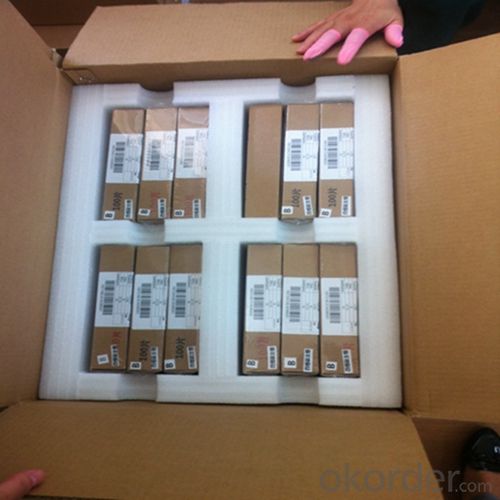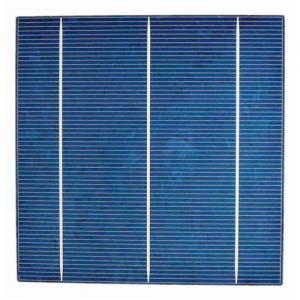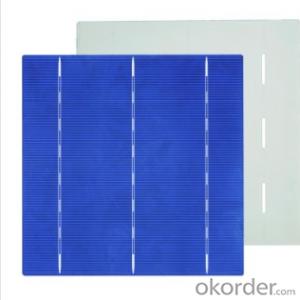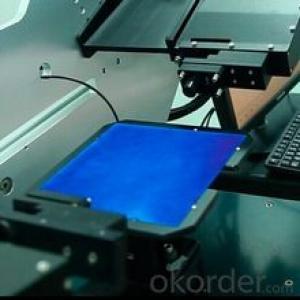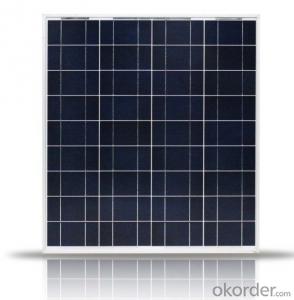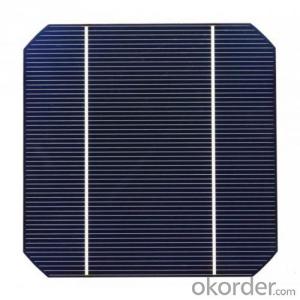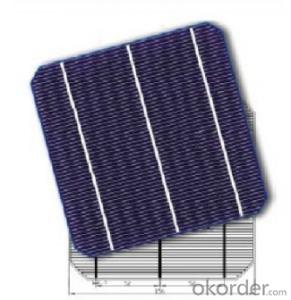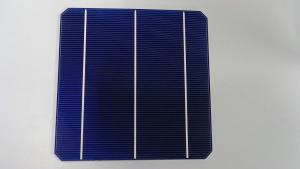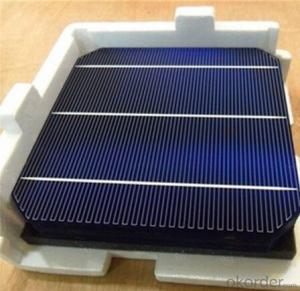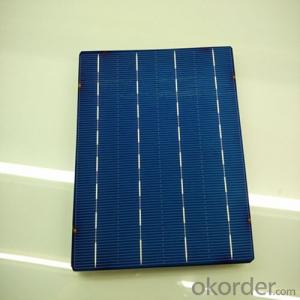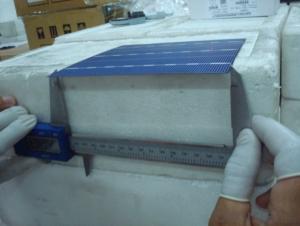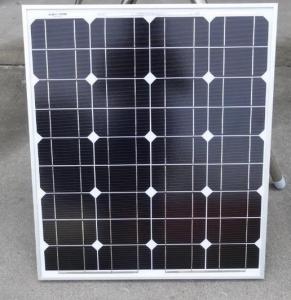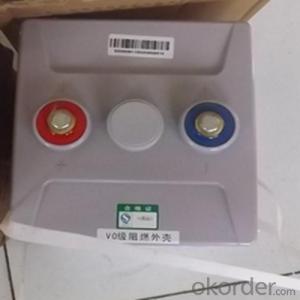Mono 156X156MM2 Solar Cells Good Quantity
- Loading Port:
- Shanghai
- Payment Terms:
- TT OR LC
- Min Order Qty:
- 6999 watt
- Supply Capability:
- 650000 watt/month
OKorder Service Pledge
OKorder Financial Service
You Might Also Like
Benefits of Solar Power:
Now is a great time to go solar and harvest the power of the sun. Here is our top ten list of the benefits to installing solar power:
When installed, solar energy is free – no resources are consumed
Help to lessen our dependence on heavily polluting coal power stations
Fossil fuels can't last forever, future generations will appreciate the effort
Characteristic of Mono 156X156MM2 Solar Cells
You are gaining energy independence - add battery backup power for even greater energy security
The cost of electricity is only going to rise – insure against that rising cost
Quality solar power and water adds value and appeal to your home
Specifications of Mono 156X156MM2 Solar Cells
Solar PV systems are easily upgraded in future - aim to make your house a net energy producer!
Solar panels offer a long lifetime of low maintenance service, maybe 30-40 years
Your friends will think you're great!
You'll feel great for doing your bit for the environment!
Mechanical data and design
Format | 156mm x 156mm±0.5mm |
Thickness | 210μm±40μm |
Front(-) | 1.5mm bus bar (silver),blue anti-reflection coating (silicon nitride) |
Back (+) | 2.5mm wide soldering pads (sliver) back surface field (aluminium) |
Temperature Coefficient of Cells
Voc. Temp.coef.%/K | -0.35% |
Isc. Temp.coef .%/K | +0.024%/K |
Pm.Temp.coef. %/K | -0.47%/K |
Electrical Characteristic
Effiency(%) | Pmpp(W) | Umpp(V) | Impp(A) | Uoc(V) | Isc(A) | FF(%) |
18.35 | 4.384 | 0.526 | 8.333 | 0.63 | 8.877 | 78.39% |
18.20 | 4.349 | 0.526 | 8.263 | 0.63 | 8.789 | 78.54% |
18.05 | 4.313 | 0.525 | 8.216 | 0.63 | 8.741 | 78.32% |
17.90 | 4.277 | 0.524 | 8.161 | 0.625 | 8.713 | 78.04% |
17.75 | 4.241 | 0.523 | 8.116 | 0.625 | 8.678 | 77.70% |
17.60 | 4.206 | 0.521 | 8.073 | 0.625 | 8.657 | 77.36% |
17.45 | 4.170 | 0.519 | 8.039 | 0.625 | 8.633 | 76.92% |
17.30 | 4.134 | 0.517 | 8.004 | 0.625 | 8.622 | 76.59% |
17.15 | 4.096 | 0.516 | 7.938 | 0.625 | 8.537 | 76.80% |
17.00 | 4.062 | 0.512 | 7.933 | 0.625 | 8.531 | 76.18% |
16.75 | 4.002 | 0.511 | 7.828 | 0.625 | 8.499 | 75.34% |
16.50 | 3.940 | 0.510 | 7.731 | 0.625 | 8.484 | 74.36% |
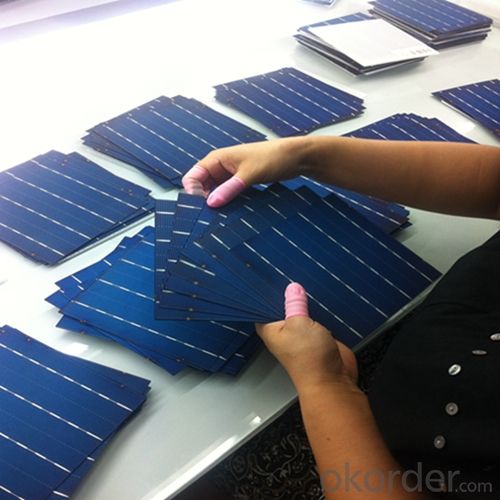
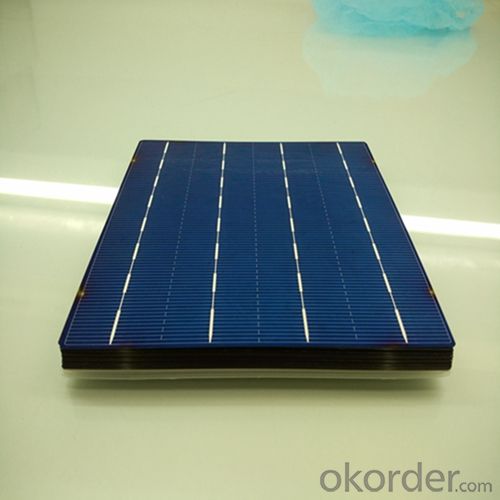
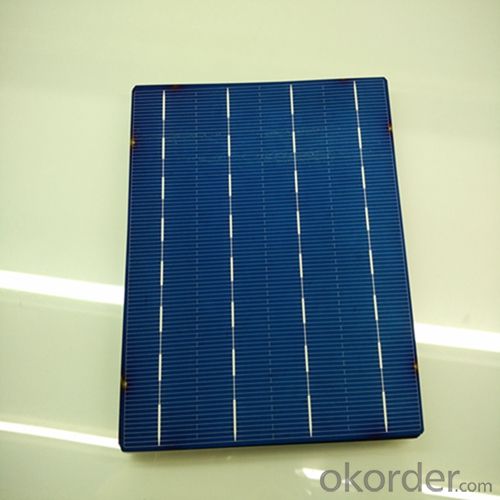
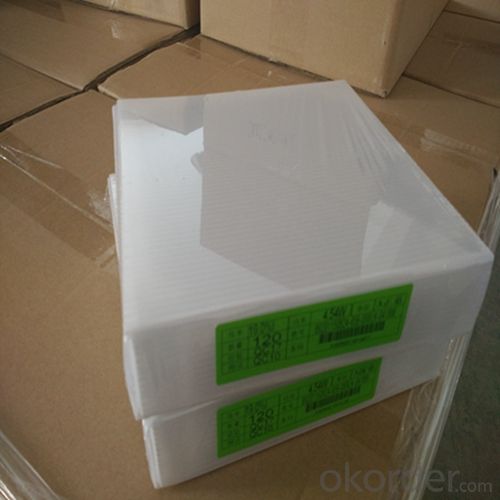
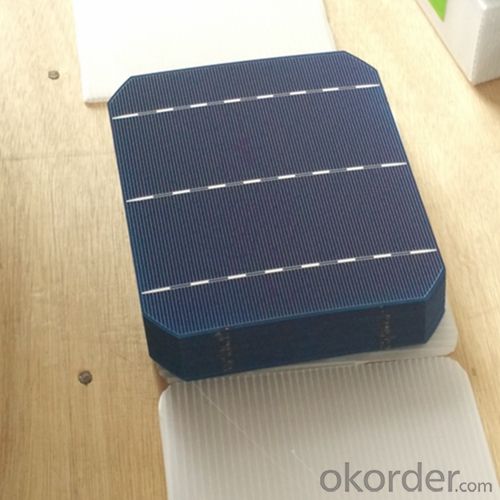
FAQ
Q: What price for each watt?
A: It depends on the quantity, delivery date and payment terms, generally Large Quantity and Low Price
Q: What is your size for each module? Can you tell me the Parameter of your module?
A: We have different series of panels in different output, both c-Si and a-Si. Please take the specification sheet for your reference.
Q: What is your size for each module? Can you tell me the Parameter of your module?
A: We have different series of panels in different output, both c-Si and a-Si. Please take the specification sheet for your reference.
- Q: What factors affect the efficiency of solar cells?
- Several factors can affect the efficiency of solar cells, including the quality and purity of the materials used, the design and construction of the cells, the amount of sunlight received, the temperature, and any external shading or obstructions. Additionally, the angle and orientation of the solar panels, as well as the presence of dirt or dust on the surface, can also impact the efficiency of solar cells.
- Q: Does the solar cell generate electricity in the absence of the sun, only in the case of strong lights or lasers? If you can achieve how much, and the same day?
- Strong light or laser light containing more than the threshold of solar cells can stimulate the solar cell power generation, if it does not contain, can not make too much battery power generation.
- Q: What are the advantages and disadvantages of solar panels and diodes?
- In the normal power supply when the diode reverse bias; only when the power reverse, the diode is biased conduction, then the diode will be short circuit after the class, and then avoid the negative voltage damage after the circuit
- Q: Can solar cells be used in commercial applications?
- Yes, solar cells can be used in commercial applications. They are commonly deployed in various sectors such as residential, industrial, and agricultural settings to generate electricity from sunlight. Many commercial buildings, factories, and even solar farms utilize solar cells to harness renewable energy and reduce reliance on traditional power sources.
- Q: Can solar cells be used in recreational vehicles or boats?
- Yes, solar cells can be used in recreational vehicles or boats. They provide a reliable and eco-friendly source of power for charging batteries and running various appliances on board. Solar panels can be easily mounted on the roof of the vehicle or boat to harness sunlight and convert it into electricity, making them an ideal solution for off-grid power needs while enjoying outdoor activities.
- Q: Can solar cells be used in residential applications?
- Yes, solar cells can be used in residential applications. They are commonly used to generate electricity for homes, providing a clean and renewable energy source. Solar panels are installed on rooftops or in yards, capturing sunlight and converting it into usable electricity for various household needs. This helps reduce reliance on traditional power grids and lowers carbon emissions, making it an environmentally friendly and cost-effective solution for residential energy needs.
- Q: How do solar cells impact local economies?
- Solar cells can have a positive impact on local economies by creating jobs in the renewable energy sector, attracting investments, and reducing energy costs for businesses and households. Additionally, the deployment of solar cells can stimulate economic growth through increased demand for related goods and services, ultimately contributing to the development of sustainable and resilient local economies.
- Q: Can solar cells be used in street lighting?
- Yes, solar cells can be used in street lighting. Solar-powered street lights use photovoltaic panels to convert sunlight into electricity, which is stored in batteries. This stored energy is then used to power the street lights during the night, making them independent from the electrical grid and more environmentally friendly.
- Q: How do solar cells perform in snowy conditions?
- Solar cells do not perform as efficiently in snowy conditions because the snow cover blocks sunlight from reaching the cells. However, modern solar panels are designed to be durable and can still generate some electricity even in snowy conditions. Additionally, when the snow melts or is removed from the panels, they can resume their normal performance.
- Q: Can solar cells be used for powering remote oil and gas pipelines?
- Yes, solar cells can be used for powering remote oil and gas pipelines. Solar energy is a sustainable and reliable source of power that can be harnessed in remote locations. By installing solar panels along the pipeline, energy can be generated and used to operate various equipment and systems, reducing the reliance on traditional power sources and minimizing the environmental impact.
Send your message to us
Mono 156X156MM2 Solar Cells Good Quantity
- Loading Port:
- Shanghai
- Payment Terms:
- TT OR LC
- Min Order Qty:
- 6999 watt
- Supply Capability:
- 650000 watt/month
OKorder Service Pledge
OKorder Financial Service
Similar products
Hot products
Hot Searches
Related keywords
